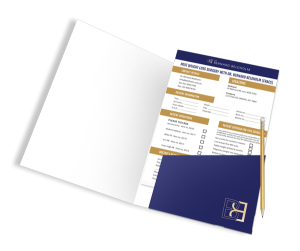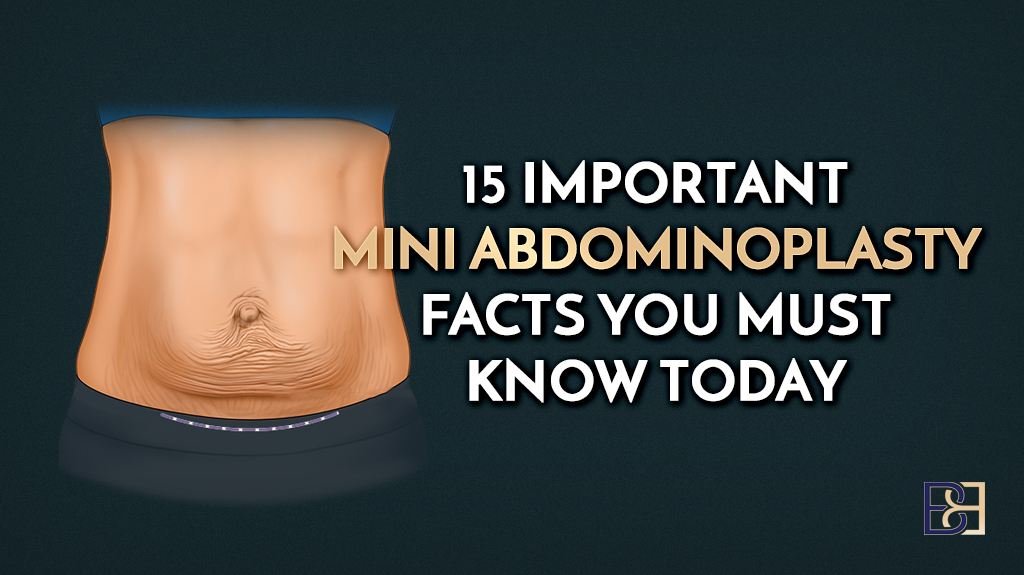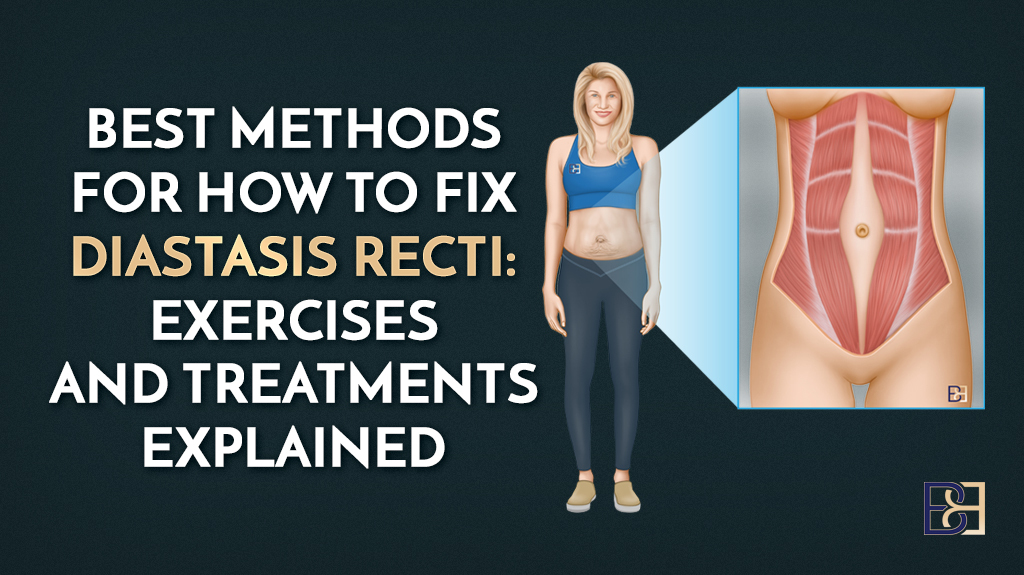Choosing the right body contouring procedure can be challenging, especially when you’re unsure about the difference between abdominoplasty and lipectomy. Abdominoplasty targets the abdominal area for a firmer look by removing excess skin and tightening muscles. Lipectomy, however, can treat multiple body parts, reducing fat and excess skin. In this article, we’ll explain these procedures in detail, helping you decide which suits your needs best.
Book your appointment online now
Key Takeaways
- Abdominoplasty focuses on the abdominal area, removing excess skin and fat while tightening muscles, mainly for those post-pregnancy or significant weight loss.
- Lipectomy can target multiple areas of the body for broader contouring and is often chosen by individuals needing comprehensive skin and fat removal after major weight loss.
- Choosing the right procedure depends on personal goals and body type, so consulting with a board-certified plastic surgeon is key for tailored advice.
What is Abdominoplasty?
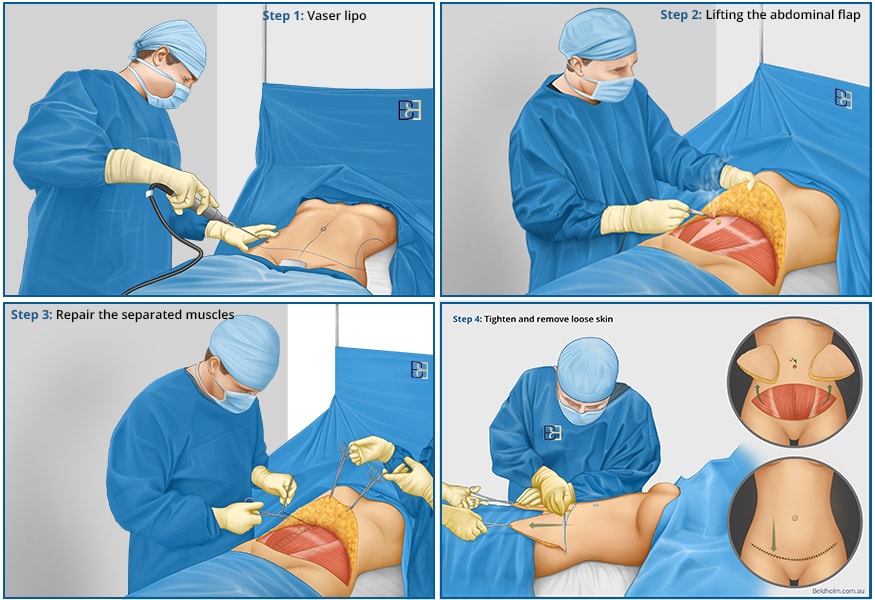
A classic abdominoplasty is a type of lipectomy, meaning it removes both fat and skin from your belly. As mentioned earlier.
Every patient is different, so if you are not sure what kind of abdominoplasty you need, come in and see me. You may only need a lipectomy to remove a hanging skin covering your lower abdomen, or you may opt for a more extensive procedure.
Causes of Extra Loose Skin
Major weight loss and post pregnancy patients know all too well that loose skin is hard to get rid of. Your skin has elastin in it, a component that allows your skin to stretch. Aging, weight gain, and pregnancy all stretch skin to its limits. The skin can only bounce back so much afterwards.
The older you get, the less elastin your skin produces. That makes it even harder for stretched skin to snap back to its original position. As a result, the skin can appear loose, textured, and wrinkled. That can be frustrating, especially after you worked hard to get in shape.
Types of Abdominoplasty
There are many types of Abdominoplasty surgeries. In this article, we will discuss the five main types of Abdominoplasties.
Mini Abdominoplasty
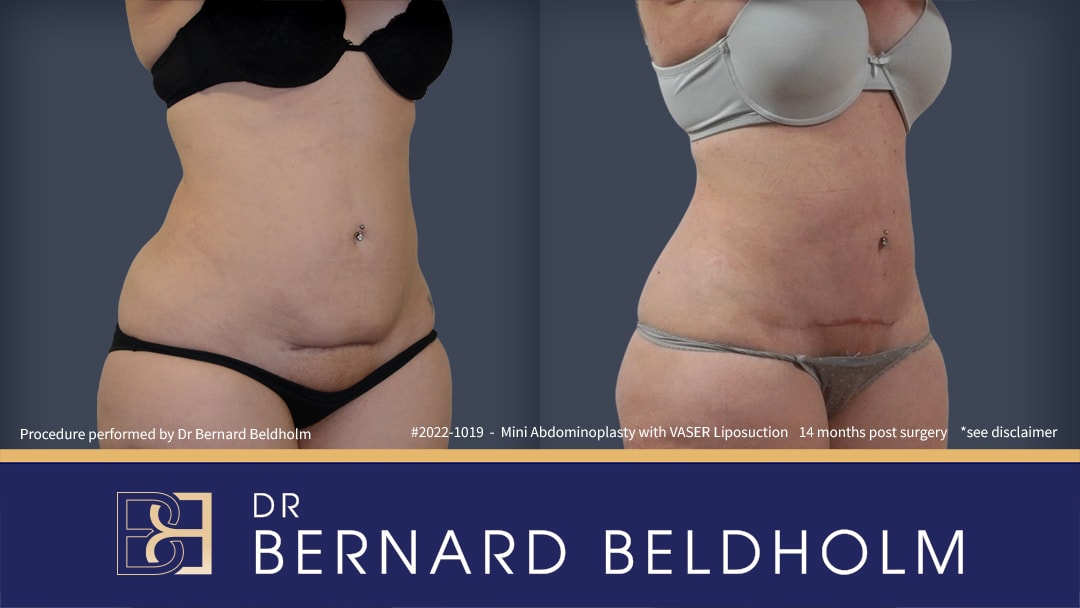
Disclaimer: Operation performed by Dr Bernard Beldholm. Adult content, surgery has risks; individual results vary, seek 2nd opinion. Please see the full disclaimer.
Popular among new mothers who have had Cesarean sections (C-sections), a mini abdominoplasty can remove the extra flap of skin and fat below the umbilicus that is left behind, and leave a smaller scar than other types of abdominoplasties.
Full Abdominoplasty
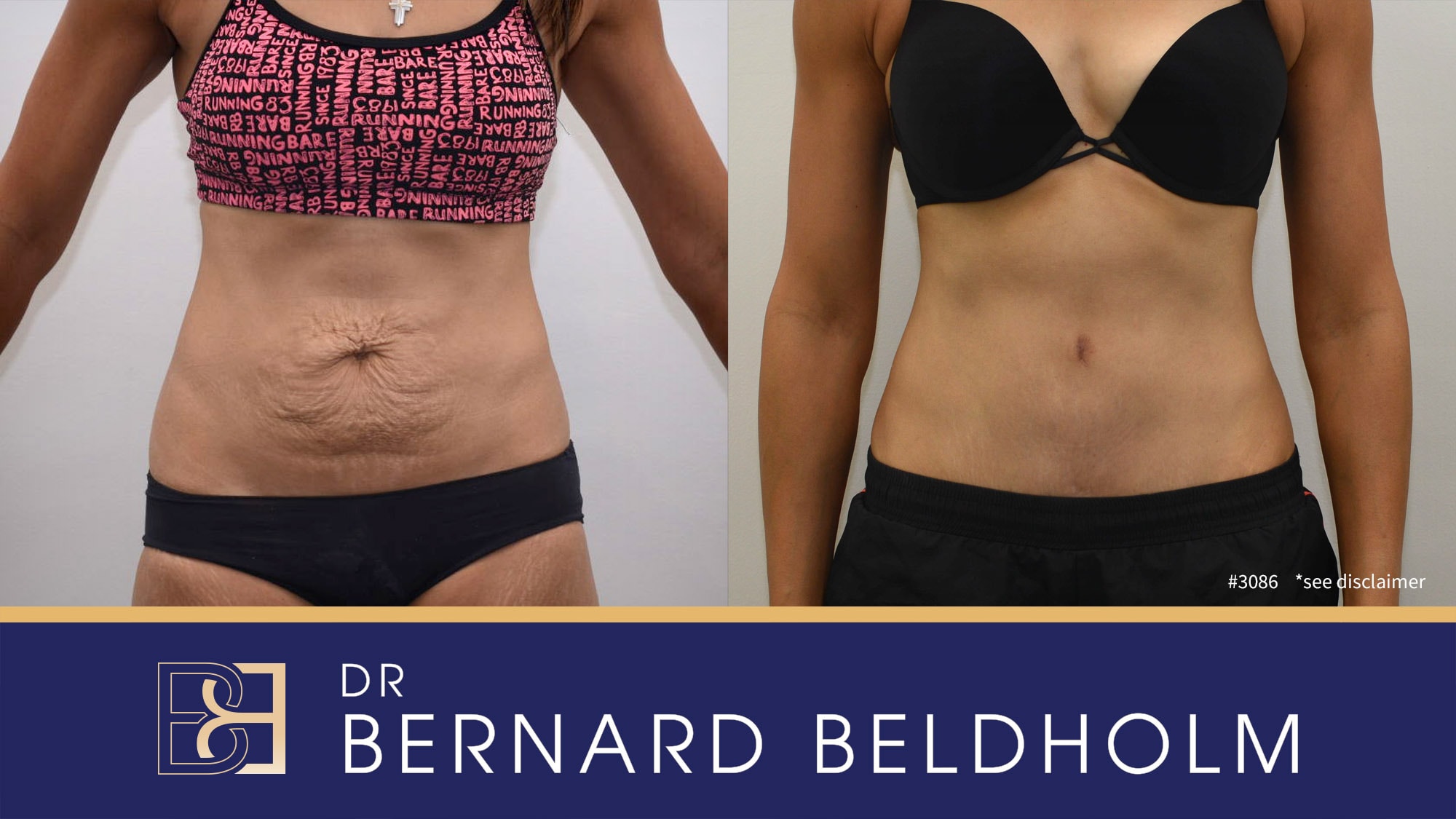
Disclaimer: Operation performed by Dr Bernard Beldholm. Adult content, surgery has risks; individual results vary, seek 2nd opinion. Please see the full disclaimer.
A classic abdominoplasty removes extra fat and tightens loose skin on your central abdominal region. Dr. Beldholm can repair torn abdominal muscles during the procedure. It is basically a lipectomy of the abdominal wall.
Full Abdominoplasty is great for patients who have had a baby or have lost major weight through diet, exercise, or surgery. This operation can be combined with suction-assisted lipectomy, or VASER liposuction, on the abdomen.
Extended Abdominoplasty
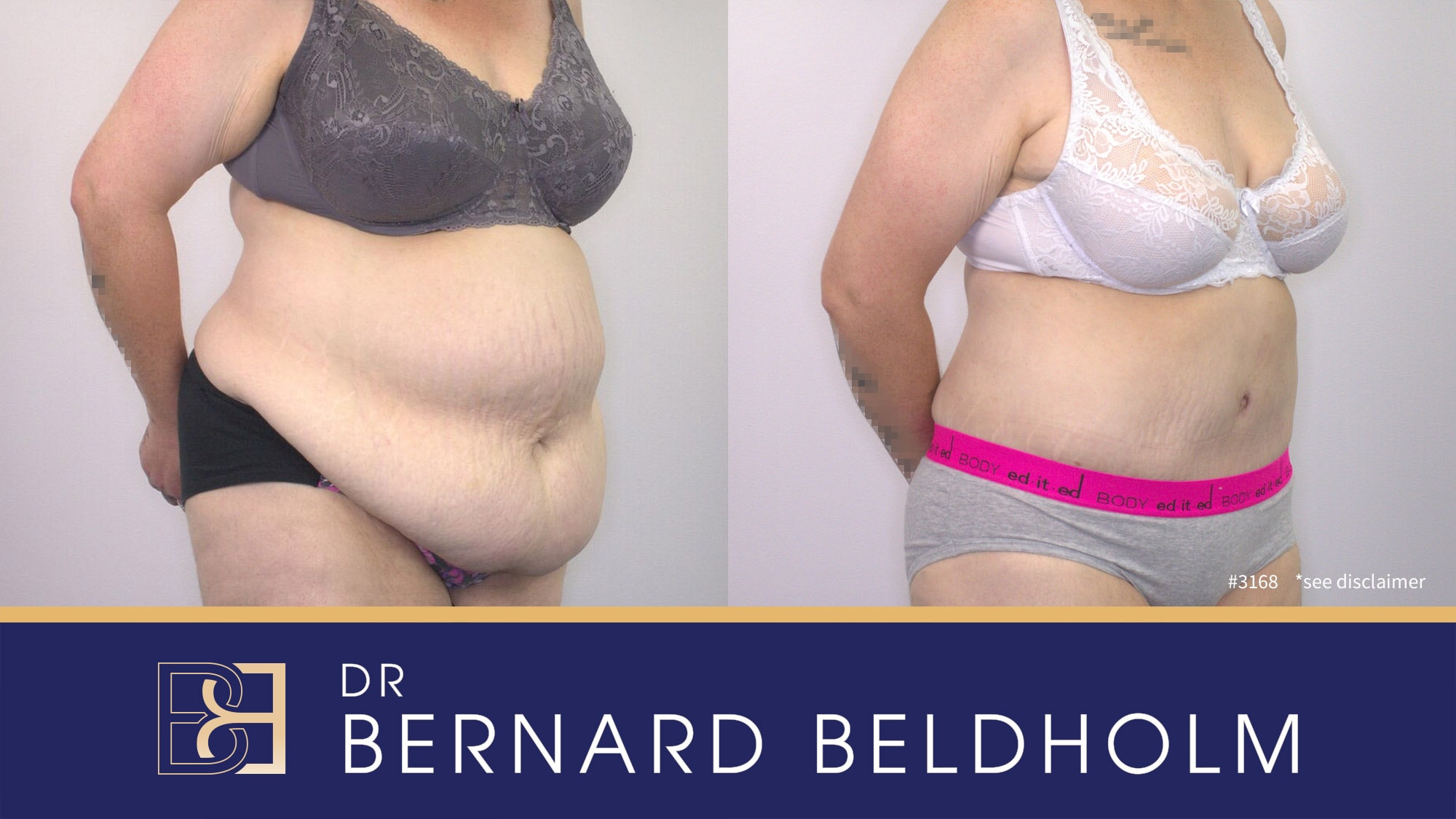
Tattoo blurred for privacy
Disclaimer: Operation performed by Dr Bernard Beldholm. Adult content, surgery has risks; individual results vary, seek 2nd opinion. Please see the full disclaimer.
An extended Abdominoplasty is like a full abdominoplasty, but it extends further around your midline. It treats the hips, flanks and thighs as well as the abdomen, if needed.
Like abdominoplasty, it can also repair split abdominal muscles, also known as diastasis recti, a common complication after pregnancy and substantial weight loss.
An extended abdominoplasty may leave a longer scar than a classic abdominoplasty, since some patients have more fat and skin to remove around their middle and sides.
Fleur-de-lis Abdominoplasty
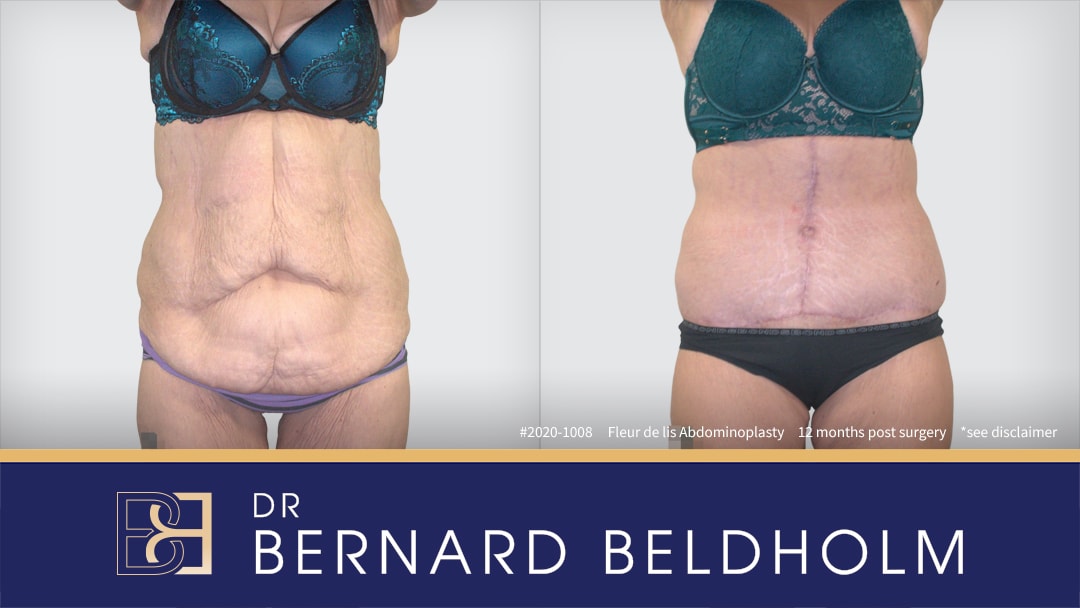
Disclaimer: Operation performed by Dr Bernard Beldholm. Adult content, surgery has risks; individual results vary, seek 2nd opinion. Please see the full disclaimer.
A fleur-de-lis abdominoplasty surgery is for post weight loss patients who have lost a significant amount of weight and for whom a regular abdominoplasty might not be enough.
FDL helps tighten the abdominal skin both vertically and horizontally, and repair torn abdominal muscles, if needed.
What is Lipectomy?
Lipectomy, a versatile plastic surgery method, involves removing fat and skin from various parts of the body to ** body contours. The term originates from Greek. The word ‘lipo-‘ means fat, while ‘-ectomy’ refers to cutting something out of the body. Unlike abdominoplasty, which focuses solely on the abdominal area, lipectomy can target multiple regions, making it a comprehensive solution for those needing broader areas of surgery.
Depending on the patient’s needs, lipectomy may involve liposuction for fat removal, along with significant incisions to excise skin. This flexibility allows specialist surgeons like Dr Beldholm to tailor the procedure to each individual’s specific requirements, whether it’s the abdomen, back of the arms, or inner thighs.
Types of Lipectomy Procedures
Lipectomy procedures are not one-size-fits-all; they are tailored to the patient’s specific needs, often focusing on multiple areas of the body simultaneously. This versatility makes lipectomy a popular choice for those seeking comprehensive body contouring procedures after significant weight loss or other life changes.
Circumferential (Belt) Lipectomy
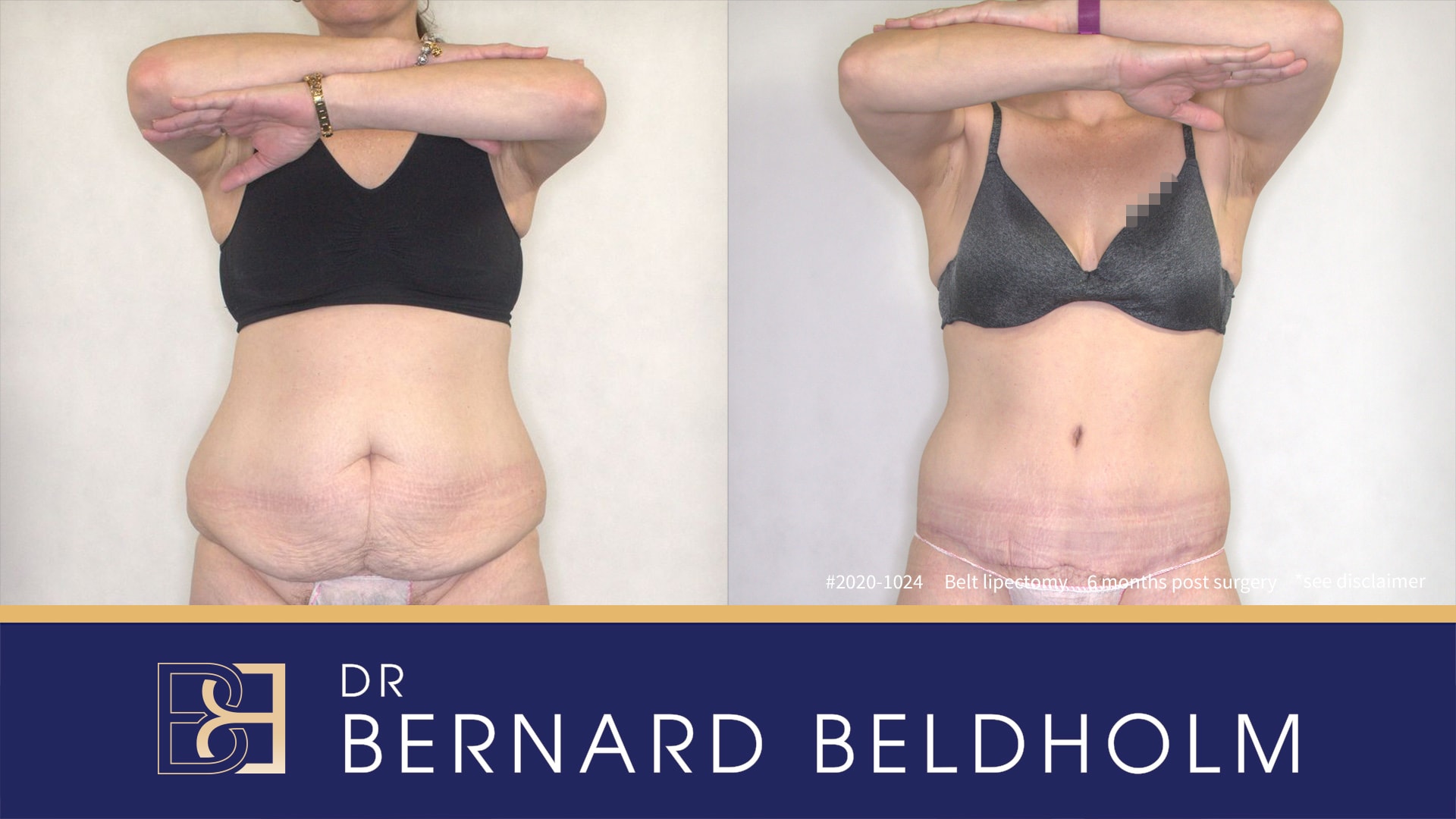
Tattoo blurred for privacy
Disclaimer: Operation performed by Dr Bernard Beldholm. Adult content, surgery has risks; individual results vary, seek 2nd opinion. Please see the full disclaimer.
A Circumferential (Belt) Lipectomy, also known as a body lift or 360-degree abdominoplasty, is a surgical procedure primarily designed for individuals who have experienced significant weight loss and are left with excess loose skin around the midsection, flanks and back.
This procedure targets:
- The abdomen
- Flanks
- Hips
- Lower back
It involves making an incision around the waist to remove excess skin and fat. The remaining skin is then pulled taut to create a smoother, more contoured appearance.
Typical candidates for belt lipectomy surgery are those who have undergone major weight loss and need to remove the resulting loose skin and extra fatty tissue. This comprehensive approach can significantly alter the body’s appearance, removing large amounts of excess skin and fat to reshape the waistline.
Brachioplasty (Arm Lipectomy)
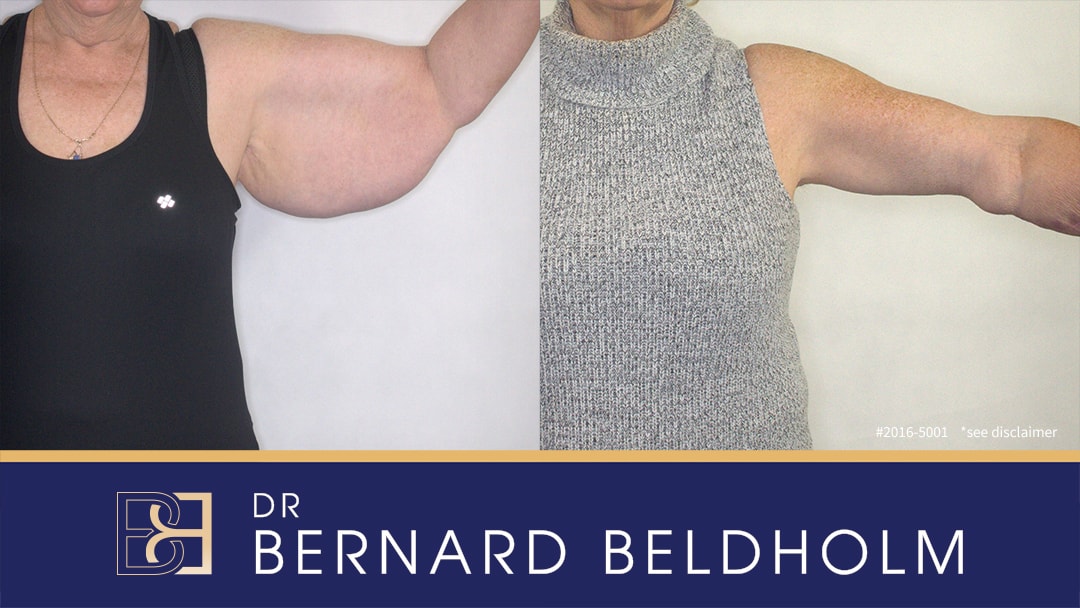
Disclaimer: Operation performed by Dr Bernard Beldholm. Adult content, surgery has risks; individual results vary, seek 2nd opinion. Please see the full disclaimer.
A lipectomy of the arms is known as a brachioplasty (arm lift) is a surgical procedure particularly beneficial for individuals who have undergone significant weight loss or those who experience loose skin due to ageing. The arms can be a challenging area to tone through exercise alone, especially when there is excess loose skin. Brachioplasty involves making incisions along the inner part of the arm to remove excess skin and fat.
Depending on the amount of excess skin and fat, the incisions can vary from minimal to extensive. Recovery from brachioplasty typically involves wearing a compression garment to minimize swelling and support the healing tissues, with most patients returning to normal activities within a few weeks. As with any body contouring surgery, consulting with a specialist surgeon is crucial to understanding the potential risks and benefits tailored to individual needs.
Key Differences Between Abdominoplasty and Lipectomy
While both abdominoplasty and lipectomy are body contouring surgeries, their focus areas and techniques differ significantly. Abdominoplasty primarily targets the abdominal area, removing excess skin and fat while tightening the abdominal muscles for a firmer appearance.
In contrast, lipectomy can target various body parts, such as the waistline, thighs, or buttocks, depending on the patient’s needs. This procedure is often chosen by those who have experienced significant weight loss and need a broader approach to removing excess skin and fat. The extensive incisions required for lipectomy often mean a longer recovery time compared to abdominoplasty.
It’s essential to note that abdominoplasty is a specific type of lipectomy focused on the abdomen, while lipectomy encompasses a range of procedures targeting different body areas. Understanding these differences helps patients choose the procedure that best aligns with their body contouring goals.
Causes of Excess Skin and Fat
Excess skin and fat can result from various factors, necessitating body contouring surgeries like abdominoplasty and lipectomy. Common causes include significant weight loss, pregnancy, aging, and genetics. Each of these factors can stretch the skin beyond its natural elasticity, leading to the need for surgical intervention.
Understanding the underlying causes of excess skin and fat and excess skin helps individuals make informed decisions about body contouring procedures. Whether it’s weight loss, pregnancy-related changes, or aging, these issues can significantly alter one’s appearance.
Weight Loss
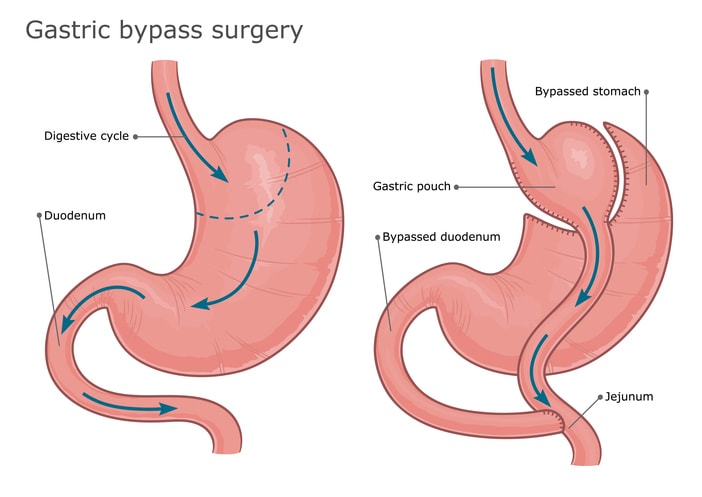
Significant weight loss, though beneficial for overall health, often results in loose skin due to the skin’s inability to shrink back enough to match the new body contours. This redundant skin can be particularly bothersome for those who have undergone massive weight loss, making surgical removal necessary.
Surgeries, such as a abdominoplasty or lipectomy can help post-weight loss patients remove this excess skin and fat, making this the final step in their weight loss journey.
Pregnancy
Pregnancy brings about significant physical changes, often leading to excess skin and torn abdominal muscles in the lower abdomen. These changes can persist even after childbirth, making it challenging for some women to return to their pre-pregnancy shape naturally.
Procedures like abdominoplasty or lipectomy can help repair torn abdominal muscles and remove excess skin.
Ageing
As we age, the production of collagen and elastin in our skin decreases, leading to ptosis.These essential proteins help maintain skin firmness and elasticity, and their depletion over time results in natural skin changes.
Body contouring surgeries can help treat these signs of ageing by removing excess loose skin and tightening the remaining skin.
Genetics

Genetics play a significant role in determining how fat is distributed in the body and how elastic the skin is. Some individuals are genetically predisposed to have less elastic skin, making them more likely to experience loose skin and the need for surgical remedies.
Understanding one’s genetic predispositions can guide decisions on whether an abdominoplasty or lipectomy woud be more tailored to treat specific genetic needs.
Book your appointment online now
Deciding on the Right Procedure
It’s important to understand when it is suitable to get an abdominoplasty and/or lipectomy of other body parts.
Are they weight loss surgeries?
No. Abdominoplasty and lipectomy are not weight loss surgeries. Examples of major weight loss surgery include gastric sleeve or gastric bypass. These are designed for patients who have an extreme amount of weight to lose and who have committed to lonng-term lifestyle changes.
Body contouring surgery is just that. It contours the body after weight loss has been achieved and loose skin is left behind. . For this reason, if you still have a lot of weight to lose, these surgeries would have to be put on hold until you do.
Can you get an abdominoplasty or lipectomy to lose fat instead of dieting?
No. While both surgeries remove excess fat, they are no substitute for diet changes. Eating healthy, reducing your calorie intake, and regular exercise can help get you to your goal weight.
For many people, this is easier said than done. You must commit to changing your eating habits and working out if you want to lose weight. This can sometimes be difficult for patients with newboen babies, busy professions, sedentary office jobs, and substantial weight to lose.
Who is a good candidate for an abdominoplasty or lipectomy?
Dr. Beldholm recommends abdominoplasty for patients who wish to remove extra fat and skin. The importance of being at a stable weight cannot be overstated. If you get the procedure only to pack on the kilos again, you’ll be right where you started. Given the expense and downtime, surgical body contouring is only appropriate for patients who are committed to maintaining their goal weight.
When should I get a lipectomy or abdominoplasty?
Think of body contouring surgery as the last stop on your weight loss journey. First comes diet, exercise, or weight-loss surgery, and a commitment to wellness. Then comes surgery.
When you have reached a stable weight, that is the time to get lipectomy or abdominoplasty. If you are still in the process of losing weight, or your weight is still fluctuating more than a few kilos, you aren’t ready for surgery just yet.Body contouring can help refine extra fat and skin once you have reached your goal weight through diet, exercise, or weight loss surgery, and you have remained stable at that weight for about six months or longer.
Also, if you have a baby and plan to get pregnant in the future, you should wait until you’ve had your last child. This isn’t a safety issue, since neither procedure impacts fertility. Rather, it is because your skin will stretch each time you get pregnant. It isn’t worth your time or money to get body contouring if you haven’t finished bearing children. You’ll put the weight right back on with each pregnancy.
Recovery and Aftercare
Recovery from body contouring surgeries like abdominoplasty and lipectomy varies based on the procedure’s extent and the individual’s healing process. Abdominoplasty generally requires a recovery period of 2-3 weeks for initial healing, with complete recovery taking up to 12 months as swelling decreases.
Patients should follow their surgeon’s post-operative care instructions meticulously, including wearing a compression garment to reduce swelling and support the incision area. Light walking is encouraged soon after surgery to promote blood flow and reduce the risk of blood clots, while strenuous activities should be avoided for an extended period.
Dr Beldholm’s Final Thoughts

Choosing the right body contouring procedure requires careful consideration of personal goals, body type, and the extent of correction needed. Consultations with a specialist surgeon are crucial for obtaining tailored insights and making informed decisions.
Patients should document their goals and concerns before the consultation to ensure a comprehensive discussion with their surgeon. Understanding the recovery time, potential risks, and the specific areas targeted by each procedure will help in selecting the most suitable option, whether it’s abdominoplasty or lipectomy.
Understanding the differences between abdominoplasty and lipectomy is essential for anyone considering body contouring surgery. Abdominoplasty focuses on the abdominal area, tightening muscles and removing excess skin and fat, while lipectomy can target multiple body areas, providing a comprehensive solution for those with broader contouring needs.
Frequently Asked Questions
What is a lipectomy?
A lipectomy is a type of plastic surgery that removes excess fat and skin from different areas of your body. It’s all about getting rid of that unwanted stuff!
What is a full abdominoplasty (tummy tuck)?
A full abdominoplasty (tummy tuck) is all about getting rid of extra fat and tightening loose skin in the abdominal area.
When is the appropriate time to get an abdominoplasty or lipectomy?
The best time to get an abdominoplasty or lipectomy is when you’ve hit a stable weight and kept it steady for at least six months. This ensures you’re in the right place for the surgery to be effective.

